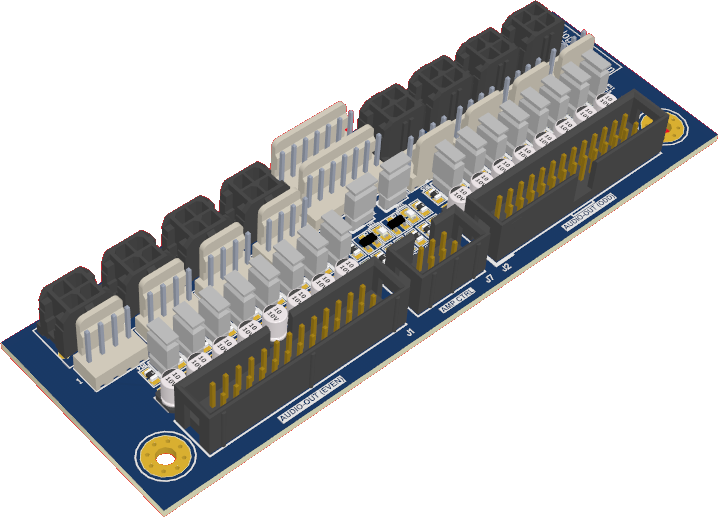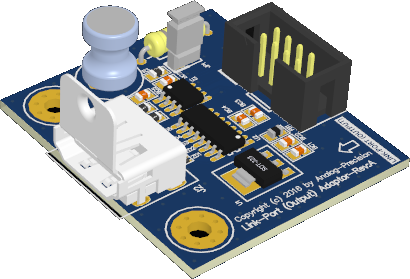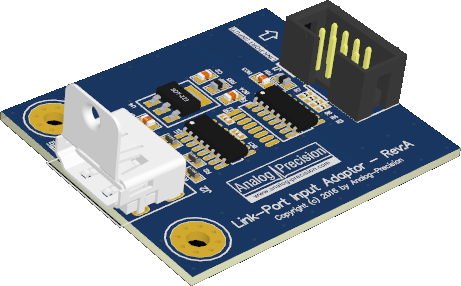Perspective....
https://www.youtube.com/watch?v=J4eOccE-rEY
The latest research using magnetic resonance scanning of the human brain is revealing much higher levels of time domain resolution ....2 Micro seconds to be precise.
The bottom line is there is no hardware ( microphones / loudspeakers) capable of recording or generating separate sounds just 2 Microseconds apart....
To be clear, all current hardware is failing by several orders of magnitude to reach the required performance level.
I believe it will be another 10 years before we have hardware capable of microsecond accuracy, focusing on the time domain is the way ahead.
Hope this helps and all the best
Derek.
Custom Install Audio | Advanced audio equipment
https://www.youtube.com/watch?v=J4eOccE-rEY
The latest research using magnetic resonance scanning of the human brain is revealing much higher levels of time domain resolution ....2 Micro seconds to be precise.
The bottom line is there is no hardware ( microphones / loudspeakers) capable of recording or generating separate sounds just 2 Microseconds apart....
To be clear, all current hardware is failing by several orders of magnitude to reach the required performance level.
I believe it will be another 10 years before we have hardware capable of microsecond accuracy, focusing on the time domain is the way ahead.
Hope this helps and all the best
Derek.
Custom Install Audio | Advanced audio equipment
2 microseconds is the wavelength of a 500k sine.
Wavelength 1mm. Can that wavelength travel far in air? (Off topic🙂)
Sorry, I need more substantial documentation to see the relevance for music🙂
Has anyone here heard the degradation/artifacts with 3k crossover and >2k tap filter?
0.1 ms is 3.4 cm difference in distance between drivers an ear. So not very much of axis.
Wavelength 1mm. Can that wavelength travel far in air? (Off topic🙂)
Sorry, I need more substantial documentation to see the relevance for music🙂
Has anyone here heard the degradation/artifacts with 3k crossover and >2k tap filter?
0.1 ms is 3.4 cm difference in distance between drivers an ear. So not very much of axis.
Last edited:
Human Auditory System (HAS)
Torgeirs,
You clearly have missed the fundamental point of time domain accuracy in audio hardware.... Its this kind of blinkered thinking that has held back the industry for twenty years....
John Watkinson gives you some clues in this article from 2014... Its not my job to educate in this (or any other subject) so I leave the research and education up to others.
As far as my own products go,I have spent years researching this subject and I believe it holds the key to a major increase in audio performance.... As they say "time will tell" !
Hope this helps and all the best
Derek.
Custom Install Audio | Advanced audio equipment
Torgeirs,
You clearly have missed the fundamental point of time domain accuracy in audio hardware.... Its this kind of blinkered thinking that has held back the industry for twenty years....
John Watkinson gives you some clues in this article from 2014... Its not my job to educate in this (or any other subject) so I leave the research and education up to others.
As far as my own products go,I have spent years researching this subject and I believe it holds the key to a major increase in audio performance.... As they say "time will tell" !
Hope this helps and all the best
Derek.
Custom Install Audio | Advanced audio equipment
Attachments
Smells like snake oil. IMHO
Time response =frequency AND phase response
I think short time/phase differences between sound sources (speaker elements) has more to it to explain artifacts that can be heard on actual instruments using fir filtering.
So crossover artifacts using long fir filters can be heard on this prosessor. (And all other prosessors that can use the same filter)
Fir filtering to reject out of band signals from DAC can not be heard on this prosessor.
Yes I know a lot of you disagree🙂
Time response =frequency AND phase response
I think short time/phase differences between sound sources (speaker elements) has more to it to explain artifacts that can be heard on actual instruments using fir filtering.
So crossover artifacts using long fir filters can be heard on this prosessor. (And all other prosessors that can use the same filter)
Fir filtering to reject out of band signals from DAC can not be heard on this prosessor.
Yes I know a lot of you disagree🙂
Last edited:
Time is seperate from frequency
No it does not!
With all due respect.... Your "humble opinion" Vs a life time of well funded research by MIT graduate Roger Dumas and the internationally respected and published work by John Watkinson... I know who I will be learning from....
Another opinion you might care to dismiss as snake oil is that of Chords top DSP engineer Robert Watts ( https://www.youtube.com/watch?v=80iu7ifXsOo ) .... He believes that we must go to -350dB phase noise in order to reproduce sound with the correct spatial performance.
This is counter intuitive on many levels and is deemed as overkill (!) by many of his rivals.... I agree with Robert and have attached my view on his work.
I am keen to learn more about his work and also explore my own theory ( as yet in proven) about the links between time domain distortion and listener fatigue.
All the best
Derek.
Smells like snake oil. IMHO
Time response =frequency AND phase response
No it does not!
With all due respect.... Your "humble opinion" Vs a life time of well funded research by MIT graduate Roger Dumas and the internationally respected and published work by John Watkinson... I know who I will be learning from....
Another opinion you might care to dismiss as snake oil is that of Chords top DSP engineer Robert Watts ( https://www.youtube.com/watch?v=80iu7ifXsOo ) .... He believes that we must go to -350dB phase noise in order to reproduce sound with the correct spatial performance.
This is counter intuitive on many levels and is deemed as overkill (!) by many of his rivals.... I agree with Robert and have attached my view on his work.
I am keen to learn more about his work and also explore my own theory ( as yet in proven) about the links between time domain distortion and listener fatigue.
All the best
Derek.
Attachments
That's all very interesting. I'd missed any mention of this link method previously. Could you maybe post a few configuration diagrams of how this could possibly all connect up?
Stefan.
I don't have any diagrams at the moment but the proposed interconnection can be summarized as follows.
For standalone active speakers an Amplifier-Control/Break-out board similar to the following would allow direct connection to the internal amplifier modules.

On the master speaker it would have one Link Port Output Adaptor

On the slave speaker it would have one Link Port Input Adaptor

All audio source units would be connected to the master speaker only.
The two speakers would be connected together using a standard HDMI cable which can be obtained in lengths of up to 10-15 meters these days. Sorry I don't have wireless connectivity as the moment. Perhaps later on 😉
cheers
.For those of you interested in soundpropagation in air and high frequencies.
100 meters, 10kHz, 1 atm, 0% humidity: 1 dB
100 meters, 100kHz, 1 atm, 0% humidity: 100 dB
100 meters, 1MHz, 1 atm, 0% humidity: 10 000 dB
So at 100kHz you probably need to compensate for absorption even at 2 - 3 meters.
At 1 Mhz you need quite a lift even at short distances. (off topic for this prosessor)
https://en.wikibooks.org/wiki/Engineering_Acoustics/Outdoor_Sound_Propagation
https://upload.wikimedia.org/wikipe...pheric_sound_absorption_coefficient_2.svg.png
http://www.jblpro.com/pub/manuals/jbl_ssdm.pdf
Figure 1-11. Absorption of Sound in Air vs. Relative Humidity
100 meters, 10kHz, 1 atm, 0% humidity: 1 dB
100 meters, 100kHz, 1 atm, 0% humidity: 100 dB
100 meters, 1MHz, 1 atm, 0% humidity: 10 000 dB
So at 100kHz you probably need to compensate for absorption even at 2 - 3 meters.
At 1 Mhz you need quite a lift even at short distances. (off topic for this prosessor)
https://en.wikibooks.org/wiki/Engineering_Acoustics/Outdoor_Sound_Propagation
https://upload.wikimedia.org/wikipe...pheric_sound_absorption_coefficient_2.svg.png
http://www.jblpro.com/pub/manuals/jbl_ssdm.pdf
Figure 1-11. Absorption of Sound in Air vs. Relative Humidity
What happens if you tilt or turn your head?You clearly have missed the fundamental point of time domain accuracy in audio hardware.
Anyway, Overkil Audio and torgeirs, can we keep this thread for its intended purpose, please? If you want to discuss this very off-topic, do it on another thread.
HDMI cable connection is neat!
I suppose even a low-grave HDMI cable will do.
When are these communication boards planned?
I suppose even a low-grave HDMI cable will do.
When are these communication boards planned?
Will it be possible to have a central master unit and two central slave units which can be ducted to active speakers either side of the central controller? I will have problems getting wiring to one side and then an HDMI cable back to the other side.All audio source units would be connected to the master speaker only.
The two speakers would be connected together using a standard HDMI cable which can be obtained in lengths of up to 10-15 meters these days. Sorry I don't have wireless connectivity as the moment. Perhaps later on
HDMI cable connection is neat!
I suppose even a low-grave HDMI cable will do.
When are these communication boards planned?
I already have the pcbs for the receivers and transmitters but not for the break-out board yet. I've yet to assembled them but I was originally able to test the functionality with a direct connection between two dsp boards and it worked well 😉
cheers
Last edited:
Will it be possible to have a central master unit and two central slave units which can be ducted to active speakers either side of the central controller? I will have problems getting wiring to one side and then an HDMI cable back to the other side.
Yes this would be possible but you would be duplicating some of the electronics so it would be a bit more expensive. You would need a central control unit with two Link Port transmitters. You would just make each speaker left-slave and right-slave respectively 😉
cheers
Post #738 shows a square wave responce with ringing. How is discussing the ringing off topic?
The ringing will be attunated by air absorption just 1 meter away. How much is interesting and on topic.
I also find it on topic that lone square waves will mask ringing, but two square waves filtered with long fir filters and summed can cause audible artifacts.
I think it has not been a problem when only short FIR has been availebal. Whith this prosessor it is not longer the case as long FIRs at all channels is possible
The ringing will be attunated by air absorption just 1 meter away. How much is interesting and on topic.
I also find it on topic that lone square waves will mask ringing, but two square waves filtered with long fir filters and summed can cause audible artifacts.
I think it has not been a problem when only short FIR has been availebal. Whith this prosessor it is not longer the case as long FIRs at all channels is possible
I don't have any diagrams at the moment but the proposed interconnection can be summarized as follows.
For standalone active speakers an Amplifier-Control/Break-out board similar to the following would allow direct connection to the internal amplifier modules.

On the master speaker it would have one Link Port Output Adaptor

On the slave speaker it would have one Link Port Input Adaptor

All audio source units would be connected to the master speaker only.
The two speakers would be connected together using a standard HDMI cable which can be obtained in lengths of up to 10-15 meters these days. Sorry I don't have wireless connectivity as the moment. Perhaps later on 😉
cheers
This is brilliant stuff. You'd still obvioulsy need to have the rest of the hardware somewhere. I guess that could either be all in one speaker ( if the speaker is large enough) or in a standalone box. Where is the dac in the this satellite sort of configuration?
This project gets better and better.
Hi David;
Any chance that some of those lovely renderings could eventually be made available as less detailed DXF or IGES file for chassis layout/planning purposes? I would think that mounting locations, PCB dimensions and connector locations/pin outs would be well worth it to potential users.
Thanks
Matt
Any chance that some of those lovely renderings could eventually be made available as less detailed DXF or IGES file for chassis layout/planning purposes? I would think that mounting locations, PCB dimensions and connector locations/pin outs would be well worth it to potential users.
Thanks
Matt
Sorry for not replying earlier. I have spent the last few days recovering files from a hard disk crash. Although I keep regular backups of my data I have managed to recover the last 3 weeks of work although there is still a lot of work reinstalling the system and software all over again.
Does anyone have any experience using solid state hard drives as I am looking at going down this path for the windows install part of it and a normal mechanical hard drive for my data ?
Regarding the project there have been lots of good things incorporated into the firmware and hardware as well as some inmportant fixes. Also I am waiting on delivery of some cases which should arrive very soon.
Cheers
David
Does anyone have any experience using solid state hard drives as I am looking at going down this path for the windows install part of it and a normal mechanical hard drive for my data ?
Regarding the project there have been lots of good things incorporated into the firmware and hardware as well as some inmportant fixes. Also I am waiting on delivery of some cases which should arrive very soon.
Cheers
David
Yes I do. Same problem you seem to be recovering from.Does anyone have any experience using solid state hard drives as I am looking at going down this path for the windows install part of it and a normal mechanical hard drive for my data ?
And the SSD's that I have been using are working very well. One is now 6 years old. It's very quiet can hardly hear it spinning!
😀
Does anyone have any experience using solid state hard drives as I am looking at going down this path for the windows install part of it and a normal mechanical hard drive for my data ?
I migrated from an HDD to an SSD about 18 months ago and it has been a very positive change. Quick to boot, fast to install and uninstall software, quick to clean.
Instead of using a separate HDD for your data, I suggest you consider these options;
1. Two SSD in mirror for system and data, but you may need terabyte drives
2. Two smaller (250Gig) for system and two HDD in mirror for data - messy in Windows
3. Two smaller SSD for system and a separate NAS for all of your data.
I suggest the last option is preferable. A NAS using an HP Gen 8 microserver, with FreeNAS, 16G RAM, and a minimum of four terabytes (four x 2TB or two x 4TB NAS HDDs) of fully redundant storage in a non-proprietary box would give less risk and less possible downtime from a crash. This option is quite reasonably priced in Melbourne. PM if you want.
Last edited:
Does anyone have any experience using solid state hard drives
One advice: given the way SSD controllers work, and cells durability, you should either buy a "consumer" SSD much larger than what you need (ie keep large portions of it empty or unchanged most of the time) or buy an enterprise grade SSD (low number of states per cell, see SLC vs MLC, etc.).
First option is often the most attractive one...
- Home
- Vendor's Bazaar
- Hi-end DSP based multi-channel integrated Preamp/Crossover/DAC project